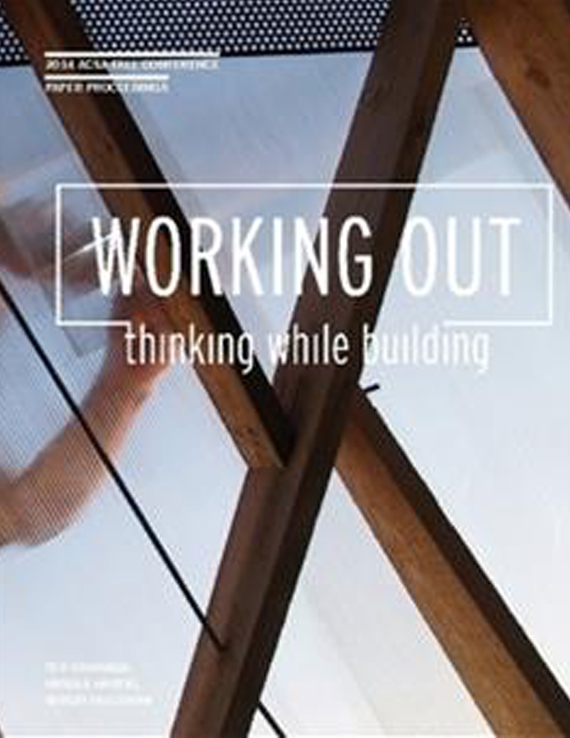Author(s): Farzana Gandhi & Jason Van Nest
While many architecture schools have introduced design-build as an active component in their curricula in recent years, most follow in the footsteps of the pioneering model demonstrated by Samuel Mockbee for the Rural Studio at Auburn University. These traditional design-build programs address the “make-believe” abstraction of architectural education by matching students with a real client in an immediate socio-economic context along with construction experience from start to finish. However, as students increasingly embrace complex, interdisciplinary design problems, it is critical that architectural education question what constitutes design-build and whether alternative models exist — ones where projects are client-less, site-less, and program-less, but offer a different set of equally rigorous “real-world” constraints via a research-driven process of designing and building a product.This paper proposes one such alternative model in the context of a product-oriented design-build project based at the New York Institute of Technology. Professors at NYIT challenged students to develop a kit-of-parts disaster-relief shelter package, where all architectural building materials (roofing purlins and roofing tiles) are up-cycled from reconstituting a patented shipping pallet and the water bottles it ships. This structure requires that a design-build studio be run in a fundamentally different way – as one that focuses on building assembly system/product design (not singular architectural artifact), on programmatic/performance requirements throughout a product’s life-cycle (not singular use), and on visual communication for investing audiences through social media and crowd-funding (not singular client).If one of the goals of traditional design-build education is to offer hands-on experience with construction, materials, and craftsmanship, an architectural student wearing a product design hat finds himself similarly in unknown, but fruitful territory, confronted by fabrication limitations down to the scale of connection detail. In the absence of customary client-architect-contractor constituents, students are also asked to define both project scope and constraints as well as target audience and sites, continually walking a line between short-term research activities (building a proof-of-concept prototype for a locally specific client and site) and long-term aspirations (leveraging existing shipping, distribution, and disaster relief networks to reach masses in need). This encourages unique research for a societal-focused “big picture” view that, in turn, informs appropriate approaches to design, materials, and fabrication.Funding design-build studios has always been a problem and in the economic downturn of the last five years, this problem is more acute. Without a specific client and site, financial support for this alternative design-build model requires students to pursue unconventional channels for sponsorship and to build project awareness. Crowd-funding through web platforms such as Kickstarter and Indiegogo are already popular vehicles for supporting product design. In the case of product meets architecture, students learn that targeted visual communication is key in positioning the project for its environmental, humanitarian, and also economic values. This coupled with ongoing social media updates (twitter, facebook, blog posts) can reach varying investor audiences and provide funding success.Through the discussion of the challenges, outcomes, and opportunities of this product-oriented design experiment, the authors aim to discuss potentials for this alternative model for design-build education.
Volume Editors
Sergio Palleroni, Ted Cavanagh & Ursula Hartig
ISBN
978-0-935502-94-7

 Study Architecture
Study Architecture  ProPEL
ProPEL 
